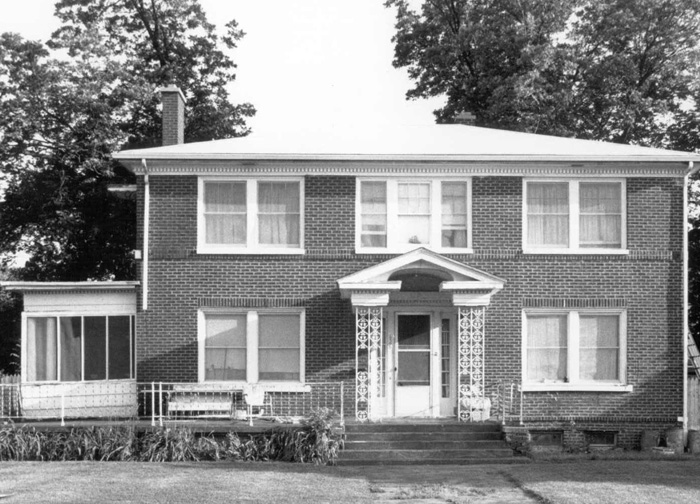626 N.E. 16th Street

626 is a Colonial red brick house with a hipped roof and dentil course at the cornice. The Colonial entrance porch has lost its wood columns for grille work, but retains them on a porch to the east. A terrace connects the entrance to the porch.
J.H. Shirk 1925-57
John Shirk, veteran attorney and pioneer city resident, was an active civic leader in Oklahoma City from the time he moved here from Elkhart, Indiana in 1907 until his death in 1942.
After attending Notre Dame University and receiving his law degree from the University of Indiana, Shirk moved to Oklahoma, passed the bar, and formed a partnership with Harris L. Danner.
In 1933, Shirk, as chairman of the board of directors of the Chamber of Commerce open shop division, headed an attack on a labor movement in Oklahoma City.
Shirk had two sons: John Shirk, Jr., a University of Oklahoma football star, and George Shirk, who grew up in Lincoln Terrace and later became mayor of Oklahoma City and a distinguished Oklahoma historian; and a daughter, Miss Lucy Shirk. Mr. George Shirk, a longtime attorney in the firm Shirk, Withington, Work and Robinson, was president of the Oklahoma Historical Society for eighteen years. He was primarily responsible for the increase in popular interest and the development of the state society. In 1956 there were under 2,000 members. In the 70s, when he had been president for 18 years, the membership approached 5,000. The state-appropriated money originally was $36,000. Under his guidance, it exceeded 1 million dollars. The number of historic sites went from two to over forty during that time period. Through Shirk's effort, relices of history which would have been forgotten have been saved. They include the columns of the Huckins Hotel, which became the first "capitol building" in Oklahoma City when the state seal was moved there from Guthrie.
George Shirk served Oklahoma in other ways. He was mayor of Oklahoma City from 1964-68. During this time, he made great progress in the field of citizen advisory committees to watchdog expenditures of bond funds. He was also a trustee of the National Historic Preservation Trust -- the only trustee who did not represent an eastern state at that time. He was the liaison for Oklahoma for the National Historic Preservation Act, which made him a member of a review board responsible for approving all new sites in the National Register of Historic Places. There were, during his tenure, eighty-three such sites.
© Lincoln Terrace Neighborhood Association | Oklahoma City